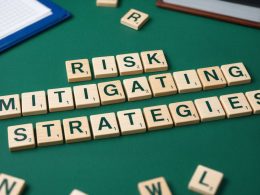by Kristina Hooper, Chief Global Market Strategist, Invesco
Key takeaways
| Year of the Rabbit I’m hoping this year will bring a different energy to financial markets — one that may bode well for investors. |
Federal Reserve I believe the Fed will hit the pause button this spring, but I also believe it’s unlikely to cut rates this year unless the economy deteriorates far more than expected. |
China’s reopening Many are looking to China’s economic reopening to be a critical factor in global economic growth this year. The Lunar New Year has begun, and it’s the Year of the Rabbit. After the Year of the Tiger saw markets get mauled, I’m hoping that this year will bring a different energy to financial markets — one that may bode well for investors. |
According to Chinese tradition, the rabbit “is a very gentle and clever animal. It may not be the strongest of the 12 animals, but its charm and speed attracts good qualities such as money, partnership and success.” It’s expected that this year is “likely to be calm and gentle, bringing an energy that will help those looking for more of a balanced life.”1
Could the gentleness of the rabbit translate into modest gains for the markets? Could the rabbit’s cleverness be a sign that active management may help investors navigate this year? Time will tell.
Inflation in Europe and the UK is high, but moderating
One area where I hope to see some greater calm is inflation, which is continuing to moderate in the eurozone and UK. Eurozone inflation declined to 9.2% year over year in December, following November’s reading of 10.1% and October’s peak of 10.6%.2 Similarly, UK inflation for December rose 10.5% year over year, less than November’s 10.7% and October’s peak of 11%, when domestic energy bills surged.3
Of course, we can’t ignore that these numbers are still very high, and so it’s unclear whether they will be satisfactory enough for their respective central banks to hit the pause button soon.
The Federal Reserve tamps down talk of rate cuts
That is the same question being asked about the U.S. Federal Reserve. Recently, “Fedspeak” has had a hawkish tone.
Last week, NY Fed President John Williams said that “the shifting gears of tighter monetary policy” are “having the desired effects” but that he expects more rate hikes than perhaps the market is anticipating: “we still have a ways to go” before the Fed’s policy rate reaches “the level that I think is sufficiently restrictive to achieve our goals.”4
Fed Vice Chair Lael Brainard tried to throw cold water on the view that the Fed will soon start cutting rates: “Policy will need to be sufficiently restrictive for some time to make sure inflation returns to 2% on a sustained basis.”5
I personally think the latter is more likely than the former, and that the Fed will hit the pause button this spring. But I also believe it’s unlikely to cut rates this year unless the economy deteriorates far more than expected. As for the latter, we’ve already started hearing whispers that the Fed is likely preparing to decide what they will need to see in terms of inflation and other data in order to hit the pause button.
China’s reopening is critical for Asia’s economic growth
While inflation and central bank policy are the critical factors that will help dictate economic growth this year for major Western developed economies, I believe that China’s reopening will be the critical factor for Asian economic growth. I was happy to see that International Monetary Fund (IMF) Deputy Managing Director Gita Gopinath echoed our view that China could see a sharp recovery in economic growth starting in the second quarter.
Interestingly, many are looking to China to be a critical factor not just for growth in Asia but for global economic growth this year. Kristalina Georgieva, IMF Managing Director, said China’s successful economic reopening “is very likely the single most important factor for global growth in 2023. It matters tremendously.”
I was also encouraged by comments from Vice Premier Liu He at the World Economic Forum in Davos.6 He said all the right things in his clarion call to investors, “China’s national reality dictates that opening up to the world is a must, not an expediency. We must open up wider and make it work better.” In addition, he assured that “entrepreneurs, including foreign investors, will play a critical role as they are the key elements of social wealth creation.” Some may be skeptical that regulatory policies this year will live up to those expectations, but I believe the easing of COVID-19 restrictions is very convincing.
Fast like a rabbit?
Rabbits are gentle and clever, but I also think of them as fast. Speed will be important this year, as I am hoping for two key things to happen quickly:
I would like to see central banks quickly become satisfied with how much they have tamped down demand and controlled inflation and end their tightening cycle before they dampen demand so much that economies become very damaged.
I would like to see COVID infections quickly fall in China after what is likely to be an increase in cases caused by Chinese New Year travel, clearing the way for more robust economic growth.
Looking ahead: Earnings season and U.S. inflation
We’re moving deeper into earnings season, which means we’ll likely hear some disappointing results and get some downward guidance. That’s to be expected, and we shouldn’t be rattled by the volatility it is likely to create. It’s an unfortunate but unsurprising byproduct of central bank tightening – as are all the recent headlines on layoffs – and it’s what the Fed wants to see as part of its efforts to cool demand.
For example, one U.S. homebuilder recently announced a significant increase in contract cancellations in the fourth quarter, while some major financial services firms are seeing credit losses increase; but isn’t that cooling of economies what central banks want to see? We need to think of it as taking us one step closer to central bank pausing, and ultimately an economic recovery.
One important data point we’re getting this week is the U.S. Personal Consumption Expenditures (PCE) Price Index – the Fed’s preferred measure of inflation. If it comes in at or below expectations, it could help push the Fed to hit the pause button sooner rather than later — and that would be an important step to helping markets feel a little calmer in the Year of the Rabbit.
Footnotes
1 Source: BBC, “Lunar New Year: What does the Year of the Rabbit signify in Chinese culture?” January 2023
2 Source: Eurostat, Jan. 18, 2023
3 Source: UK Office for National Statistics, Jan. 18, 2023
4 Source: Reuters, “Davos 2023: China recovery could be very quick -IMF's Gopinath,” Jan. 18, 2023
5 Source: International Monetary Fund, “Transcript of International Monetary Fund Managing Director Kristalina Georgieva Media Roundtable,” Jan. 12, 2023
6 Source: China Daily, “Vice-Premier Liu He's speech at the World Economic Forum Annual Meeting,” Jan. 17, 2023
Copyright © Invesco















